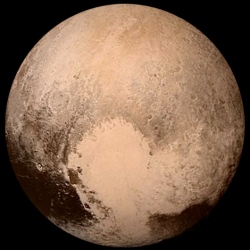
In 2006, the International Astronomical Union (IAU) voted to adopt a new definition of what makes a planet, and to demote Pluto to the status of dwarf planet. New data is streaming in from New Horizons showing that Pluto is a little larger than previously thought, and home to some remarkable geological features.
Perhaps not surprisingly, some of the most prominent advocates for Pluto are scientists working on the New Horizons mission, which reached the closest point of its long-awaited Pluto fly-by on July 14.
"We are free to call it a planet right now," Philip Metzger, a planetary scientist on the New Horizons mission, told DW.com. "Science is not decided by votes … the planetary science community has never stopped calling bodies like Pluto ‘planets’."
Indeed, science, like journalism, is not a democratic process, which tends to make it a little messy at times. But for the sake of standardization and communication, we all cut corners now and then by agreeing to imperfect definitions of concepts.
This lets us avoid constantly having to refer to things like Pluto in terms such as "an object possessing many traditional qualities ascribed to planets but also sporting more anomalous characteristics, like its sharing of an orbital centerpoint with its moon Charon and lying in a region of deep space occupied by trans-Neptunian objects likely originating from the nearby Kuiper Belt."
Pluto and its moon Charon compared with Earth
The real trouble for Pluto arguably started with the 2005 discovery of Eris. Eris is one of those aforementioned trans-Neptunian objects (things that orbit the sun from a point beyond Neptune, on average) that was thought to be significantly larger than Pluto.
If Pluto is a planet, then surely larger Eris must be a planet, and if things smaller than Eris like Pluto are planets, then there could literally be hundreds of trans-Neptunian objects deserving of being added to the family of planets.
